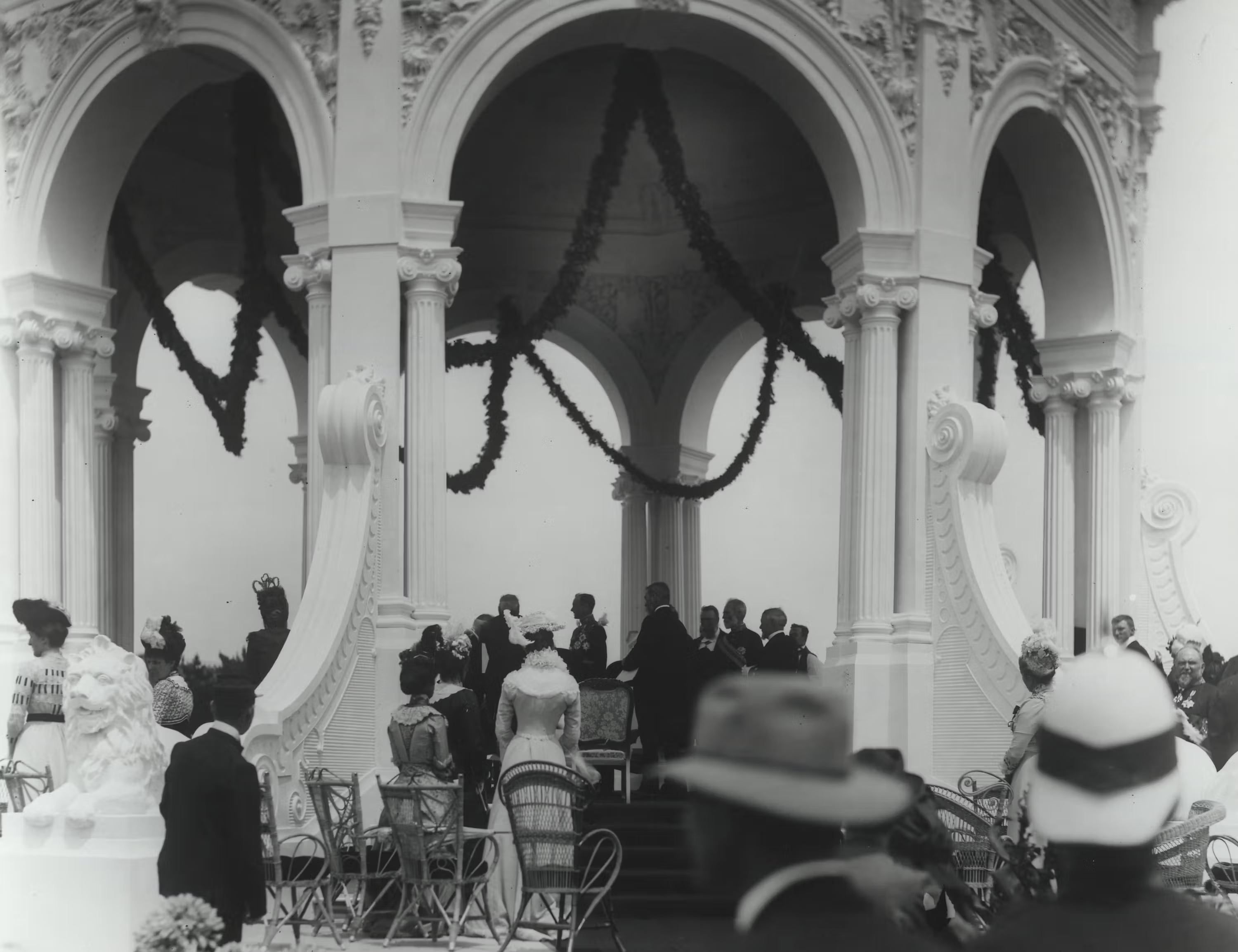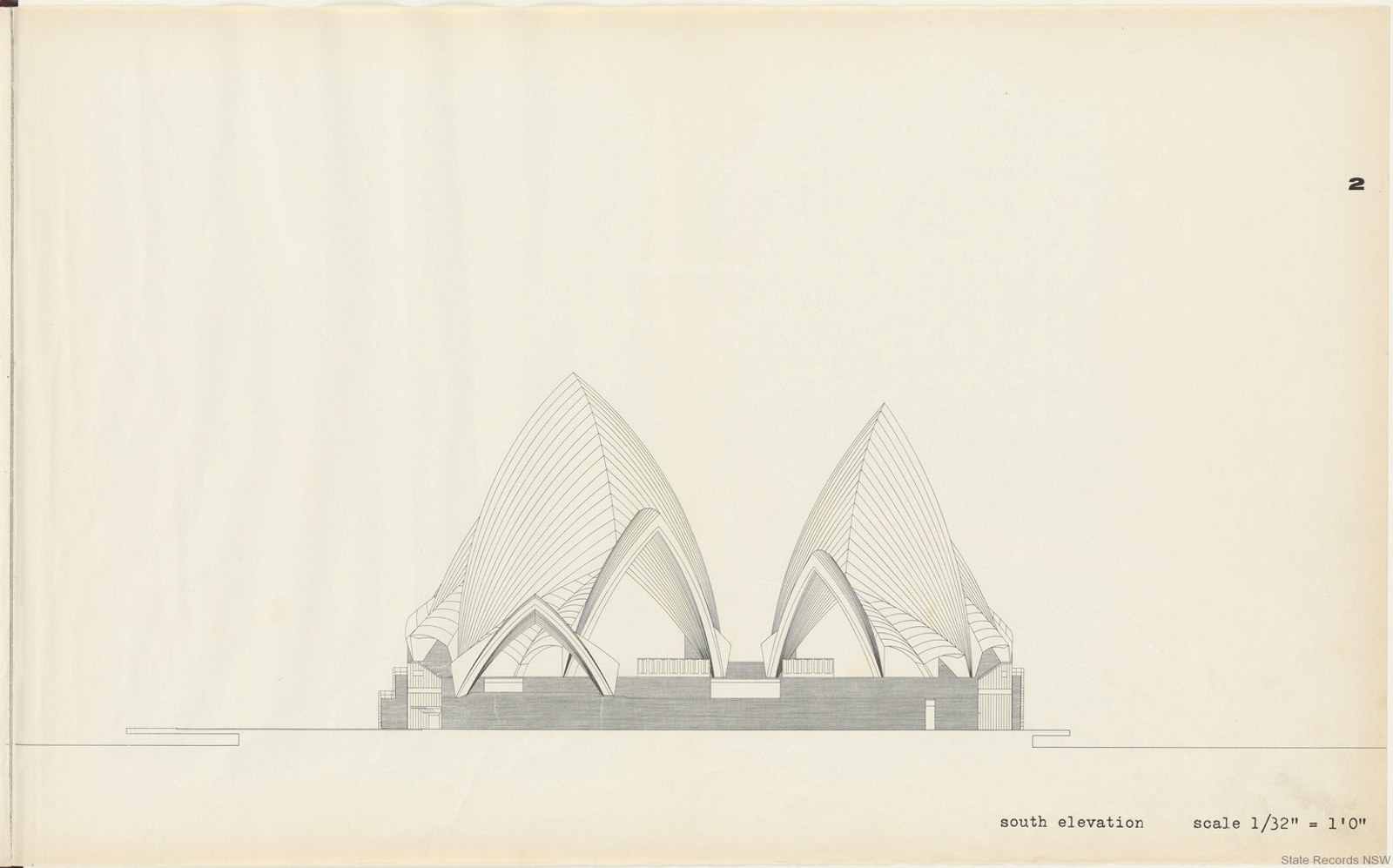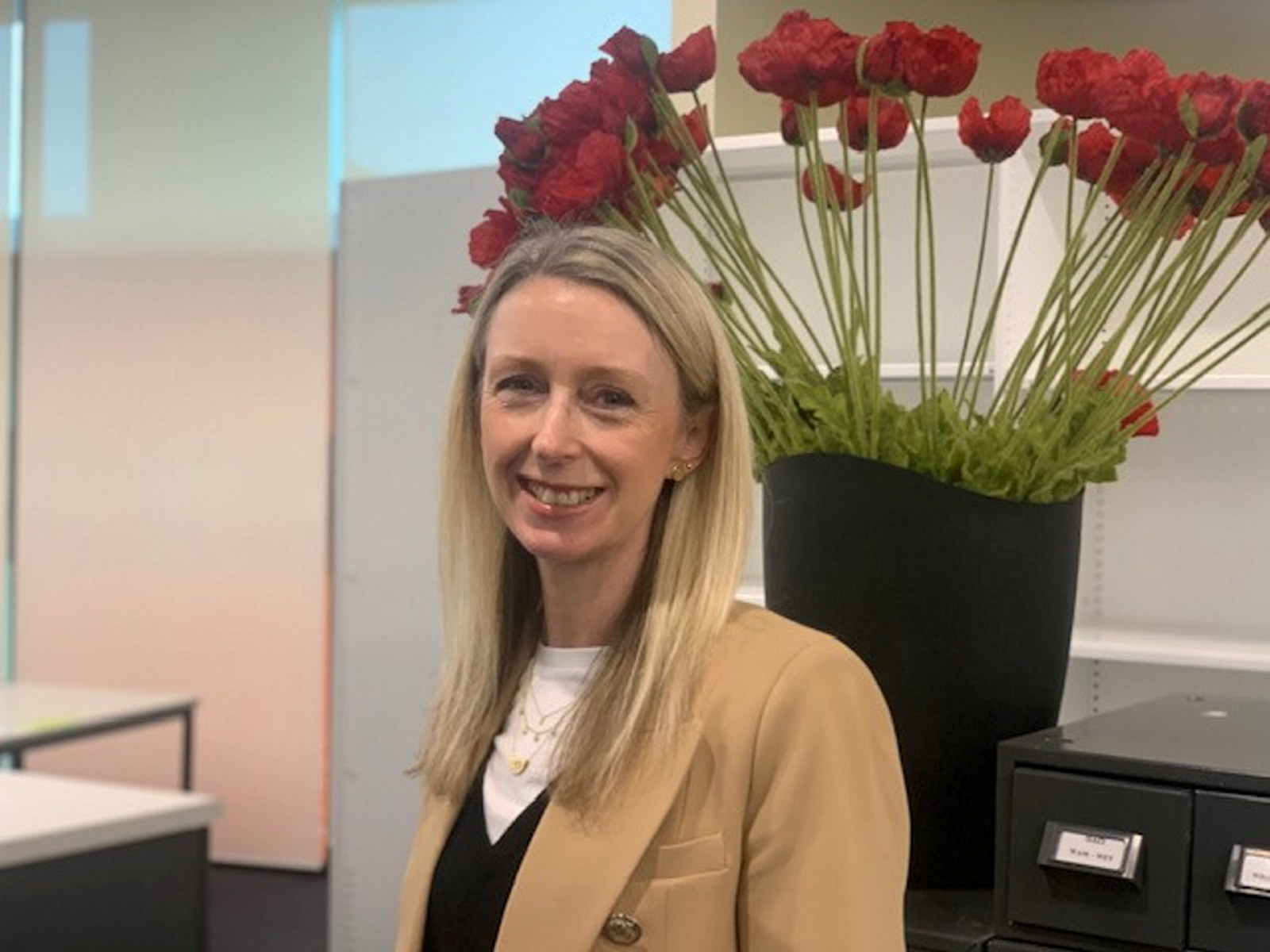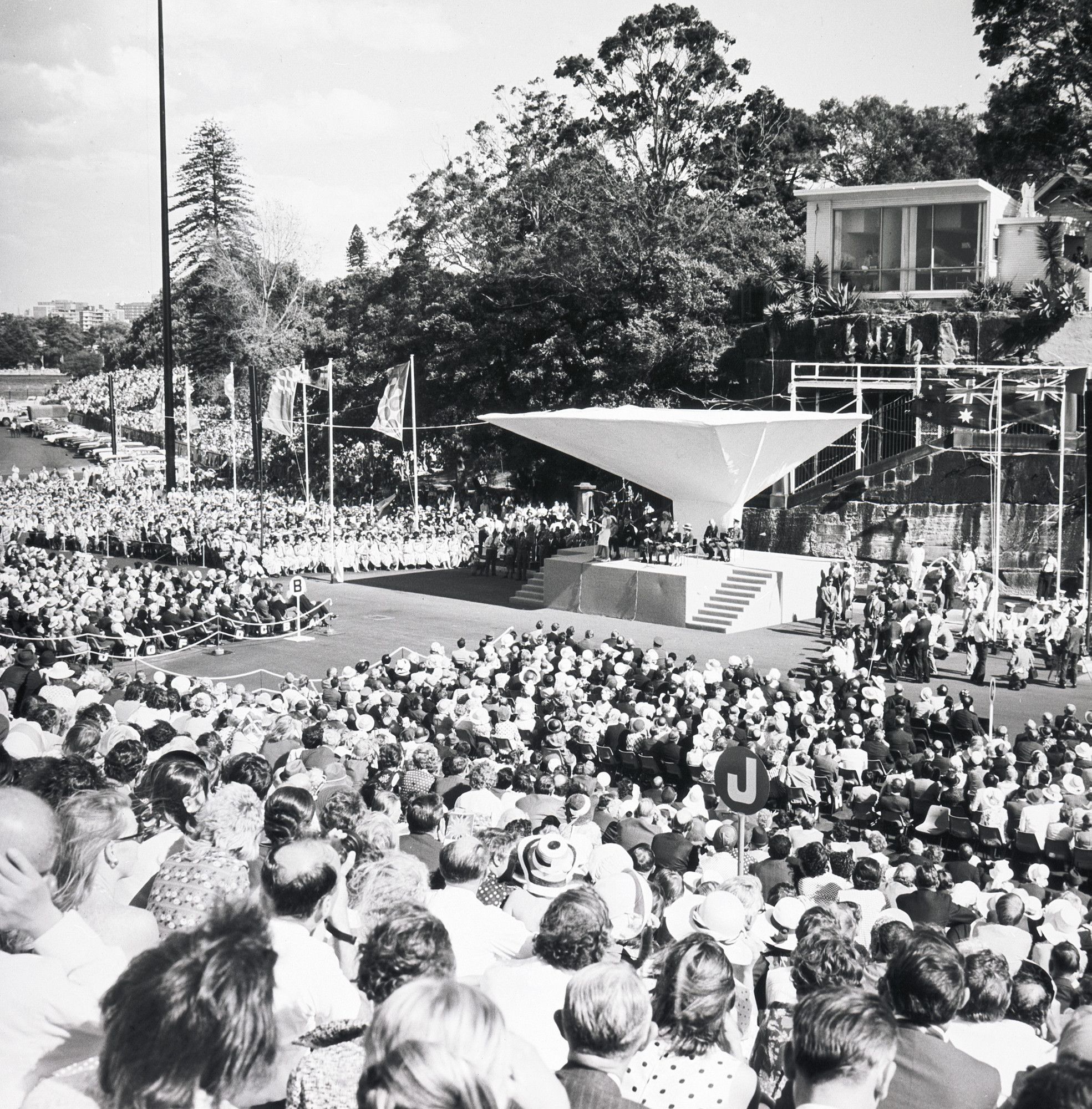A look back at the Sydney 2000 Olympics
Do you remember when Olympic Fever hit Sydney in 2000? The Olympic Games and Paralympic Games in Sydney welcomed and hosted over 11,000 athletes from 199 countries. Together with 50,000 volunteers and millions of spectators Sydney captured the attention of the world - a city of sport, festivals, arts, community, friendship and fun
Aboriginal and Torres Strait Islander people are respectfully advised that this gallery contains images or names of deceased people in photographs or text.
Overview
The International Olympic Committee awarded Sydney the right to host the Games of the XXVII Olympiad on 23 September 1993.
The Sydney 2000 Olympic Games were staged by the Sydney Organising Committee for the Olympic Games (SOCOG) (Agency 558 in our catalogue) between Friday 15 September and Sunday 1 October 2000. The Sydney 2000 Paralympic Games were held between 18 and 29 October 2000.
Established in November 1993, SOCOG worked closely with the Australian Olympic Committee, the City of Sydney Council and the NSW State Government to organise and stage the Games. The Sydney Paralympic Organising Committee (Agency 3486 in our catalogue) worked in partnership with SOCOG to stage the Sydney 2000 Paralympic Games. 1
The NSW State Government underwrote the Games and was responsible for providing the venues and facilities at Sydney Olympic Park and other precincts in Sydney. The Government also provided support services such as transport, security and medical care.
SOCOG’s mission was to
deliver to the athletes of the world and to the Olympic Movement, on behalf of all Australians, the most harmonious, athlete oriented, technically excellent and culturally enhancing Olympic Games of the modern era.2
Olympic sports
10,651 athletes from 199 countries competed in 300 events.3
There were 28 sports on the Sydney Olympics program and two sports were contested for the first time at an Olympic Games: Taekwondo and Triathlon.4
Paralympics
The Paralympics involved 3,879 athletes from 123 countries competing in 550 medal events5 and 10,000 volunteers. 14 of the 18 Paralympic sports – including archery, athletics, football and wheelchair rugby - were undertaken at Sydney Olympic Park. The remainder of the sports took place elsewhere in Sydney’s east (athletics, sailing and cycling) and west (cycling, equestrian and shooting).
The Paralympics Torch Relay began at Federal Parliament House in Canberra. The Torch was flown around Australia, visiting every capital city and back to Canberra before making a road journey through regional NSW to the Olympic Stadium for the Opening Ceremony.6
Community
Aboriginal and Torres Strait Islander participation
The Sydney 2000 Games were seen as an opportunity to show the rich culture of Australian indigenous people to the world. SOCOG worked closely with Aboriginal and Torres Strait Islander peoples to ensure that the Sydney 2000 Olympics were a Games for all Australians. Another goal was to maximise business, promotional, employment, cultural design and ceremonies design opportunities for indigenous communities.7
SOCOG established a National Indigenous Advisory Committee to provide advice and ensure the authenticity of cultural content, themes, influence, materials and protocol across events from the Olympic Arts Festivals to the many Olympics ceremonies, the Volunteers program, the Olympic Youth Camp and traditional welcoming ceremonies.8
The Torch Relay visited many significant Aboriginal and Torres Strait Islander sites. In Australia the Relay began and ended with Aboriginal athletes Nova Peris-Kneebone and Cathy Freeman. SOCOG also provided support for Aboriginal and Torres Strait Islander athletes to compete at the Sydney 2000 Games, establishing an Olympic Training Centre for indigenous athletes in Canberra.9
Community involvement
SOCOG worked to raise public awareness of the Games, recognising that reaching the Australian community and obtaining its support was essential to the Games’ success.10 SOCOG communicated closely with community and sporting groups, schools, corporate business, tourism bodies, venue councils, multicultural communities and media, and the media at all levels.
A number of initiatives including the Olympic Speakers’ Bureau, the Olympic 2000 National Education program, and Multicultural Affairs aimed to promote the Games within the Australian community.
The Olympic 2000 National Education Programs, delivered to students across the country included O-News, a newspaper circulated to students, educational resources to schools, a website and the ‘share the spirit Art Program’ which saw primary school students’ paintings on the walls of athletes’ rooms in the Olympic Village.11
The Games were also recognised as an opportunity to position Australia to a world-wide audience. The Welcome the World project encouraged all Australians to welcome people from all over the world during the Olympics. Raising customer service standards, community hospitality, publications in languages other than English, celebrations and entertainment were among the key strategies.
Volunteers
Around 50,000 volunteers were recruited for the Sydney 2000 Olympics. 40,000 for the Olympic Games and 10,000 for the Paralympic Games. Specialist Volunteers were qualified and experienced in language, medical, technology and sport. General Volunteers worked in customer service, administration, spectator services, transport and communication.12
Connection
Ceremony
The Sydney 2000 Games saw the Opening and Closing Ceremonies, welcome ceremonies and medal ceremonies. SOCOG intended ceremonies to
reflect and interpret contemporary Australian culture, social and political values … and continue the modern Olympic tradition of outstanding productions.13
The Opening and Closing Ceremonies were staged at the Olympic Stadium. The Opening Ceremony presented Australia to the world with a program of performance, pageantry and song that began with an evocation of The Man from Snowy River (Welcome), and highlighted the ocean (Deep Sea Dreaming), an Aboriginal and Torres Strait Islander welcome (Awakening), summer and fire creation stories (Fire), transformation of the environment by water (Nature), the European approach to the environment and machinery to tame it (Tin Symphony), migration and hope for the future (Arrivals) and the built environment (Eternity). Athletes marched in the stadium. The Olympic Flag was raised. Cathy Freeman lit the cauldron symbolising the end of the Torch Relay and the beginning of the Games.
Opening Ceremony
The Opening Ceremony featured a number of Australian performers: Sydney Symphony Orchestra, James Morrison, Nikki Webster, John Farnham, Tina Arena, Vanessa Amorosi, Djakapurra Munyarryn, Julie Anthony, Olivia Newton-John and Human Nature. 14,000 people were involved in creating and presenting the Opening ceremony - the creative/production team, volunteers, and performers.14
Closing Ceremony
The Olympic flame was extinguished at the Closing Ceremony. The Olympic Flag was lowered and handed to Greece in preparation for the 2004 Olympic Games. Performers included Roy and HG, Christine Anu, Neill Gladwin, Savage Garden, Yvonne Kenny, Nikki Webster, Vanessa Amorosi, John Paul Young, Jason Gilkison and Peta Roby, Tommy Emanuel, INXS with Jon Stevens, Jimmy Barnes, Midnight Oil, Yothu Yindi, Kylie Minogue, Elle Macpherson, Greg Norman, Bananas in Pyjamas, Paul Hogan, Priscilla Queen of the Desert, Men at Work and Slim Dusty. Over 5,000 performers were involved in the closing ceremony.15
Mascots
The Sydney 2000 Olympics introduced three mascots: a platypus named Syd (referencing Sydney), a Kookaburra Olly (Olympic) and an echidna Millie (Millennium). The mascots represented water, air and earth.
Olympics Arts Festivals
A series of major Arts Festivals were conducted in the years 1997-2000 in the lead up to the Sydney Olympics. The festivals’ themes reflected Australia’s diverse cultural character and looked beyond Australia to involve many nations and peoples.16
The Festival of the Dreaming (1997), directed by Rhoda Roberts celebrated Australia’s indigenous peoples and welcomed other first nations peoples of the world.
A Sea Change (1998), directed by Andrea Stretton explored the transformations wrought by cultural diversity and geography on Australia’s expression, with over 100 events from around the country.
Reaching the World (1999), directed by Andrea Stretton took the spirit of Australia to the continents that represent the five Olympic rings – Europe, Africa, Asia, the Americas and Oceania.
Harbour of Life (2000), directed by Leo Schofield, presented works of national and international significance at a time when the world’s attention was on Sydney.17
Tickets
Tickets went on sale in May 1999. Australians purchased nearly 2 million tickets through public ballots in 1999. In the lead-up to the Sydney 2000 Olympics, there was controversy as many tickets remained unsold and some sales were delayed until venue plans were released.18 At the last minute sales boomed as local enthusiasm for the Games increased. Security features incorporated into the ticketing included holograms and a three part paper process.19
Torch relay
The design of the Sydney 2000 Olympic torch was inspired by the Sydney Opera House, the colour of the Pacific Ocean and the curve of the boomerang.
The torch was lit in Olympia, Greece on 10 May 2000. It travelled around Greece for 10 days before being flown to Guam on 22 May to travel around Oceania, ending in New Zealand. The torch arrived in Australia near Uluru on 8 June. The first leg of the relay was run by Nova Peris-Kneebone who ran barefoot as a mark of respect for the Aboriginal people20.
In Australia, the torch was carried by 11,000 people. 6,000 torchbearers, people with outstanding achievements or who worked for the common good, were selected by the Australian general public. The remaining 5,000 torchbearers were Olympians, or chosen through sponsors, media partners and SOCOG.21 The torchbearers were accompanied by 2,500 runners selected from Australian high schools.22
The torch travelled 27,000km around Australia, where it was estimated that 15 million Australians would be within one hour’s journey of the relay. Athlete Cathy Freeman carried the torch through the Olympic Stadium on the last leg of the relay during the Games Opening Ceremony. The torch lit a cauldron in the Stadium and it burned for the duration of the Games.
Impact
Homebush Bay area
Homebush Bay was traditionally a meeting place for First Nations Peoples and boundary between the coastal Sydney Eora, Dharawal and inland Darug people.23
Early British colonists including Thomas Laycock, William Pritchard, Henry Waterhouse, Samuel Haslem and later John Blaxland and D’Arcy Wentworth settled in the Homebush Bay area, using the land for agriculture.
By the late 19th century parts of the Blaxland family’s Newington Estate and the Wentworth family’s Home Bush Estates had been purchased or resumed by the Crown for various public purposes for example Newington Asylum, the State Brickworks, the State Abattoirs and later chemical factories and shipbreaking. The Royal Navy built the Military Magazine on part of the Newington Estate to store explosives and ammunition, and this operated through much of the 20th century. The Homebush Bay area was heavily contaminated by general waste, military waste and industrial pollution.
In 1988 the Brickworks and the Abattoirs closed, and the Newington Depot closed shortly after.24 Clearing and rejuvenation of the area began in the 1980’s. Waste was consolidated into waste containment mounds and capped. Tidal flows to wetlands were restored and the ecosystem continues to recover.
The State Sports Centre and Bicentennial Park were established in the 1980’s. Since 1991 the remainder of the Homebush Bay area has undergone a significant program of urban and environmental renewal, including the development of parklands, transport links, sporting and entertainment venues and development areas. After Sydney won the bid to host the 2000 Olympics, this program was accelerated to ensure completion of Sydney Olympic Park in time for the Games.
Environment
In planning for Sydney 2000 SOCOG committed to a set of 100 Environmental Guidelines in the key areas of energy and water conservation, waste minimisation, pollution avoidance and protection of the natural environment.
Remediation of the Homebush Bay area lands continued and include mangroves, wetlands and woodlands. The Olympics built environment included features such as solar panels, the use of recyclable and recycled building materials in the Olympic Village, Australia’s first large-scale urban water recycling system, passive ventilation systems and efficient air conditioning.
Environmental impacts during the Games were an important consideration. Temporary building structures set up for the Games, merchandise packaging, waste management including the composting of food and foodware, and mass public transport were all designed to minimise the effects on the environment.25
Sporting, entertainment and living facilities
The Games focussed on four precincts in Sydney: Sydney Olympic Park at Homebush, Darling Harbour, Sydney East and Sydney West. New facilities were developed and tested in advance of the Games. All venues complied with the Sydney Olympic Bid Environmental Guidelines.26 Many of these world-class sporting and entertainment venues are still in use today and provide opportunities to host global events into the future.
Sydney Olympic Park venues
The following venues at Homebush were built or upgraded in preparation for the Games:
- Archery Centre
- Hockey Centre
- Superdome
- Olympic Stadium
- Sydney International Athletic Centre
- Sydney International Aquatic Centre
- Sydney Showground
- Tennis Centre
- Olympic Village27
Sydney East Precinct
Sports contested here included marathon, sailing, triathlon, football, road cycling and beach volleyball.28
Darling Harbour Precinct
The Sydney Exhibition Centre was the venue for volleyball, boxing, judo and wrestling and fencing with weightlifting held in the Sydney Convention Centre.29
Sydney West Precinct
Several sports were conducted at locations around Sydney including equestrian at Horsley Park, cycling at Fairfield City Farm, rowing and canoe/kayak at Penrith Lakes, shooting at Cecil Park, cycling at Bankstown, softball and baseball at Bankstown and water polo at Ryde.30
Interstate
Olympic football matches were held in Melbourne, Brisbane, Adelaide and Canberra.31
Olympic Village
Constructed within the Environmental Guidelines, the Village provided accommodation for athletes and officials – the first to house all athletes for every sport in one location. All venues and training facilities were less than 45 minutes travel time from the Village. At the end of the Games the Village became part of a medium density solar powered housing estate of 2,000 dwellings.32
Transport system
The success of the transport system was a major contributor to the success of the Games. The Olympic Roads and Transport Authority (ORTA) (Agency 1082 in our catalogue) was tasked with planning, co-ordinating and providing integrated road and public transport services for the Games, amongst other events.
4,662,250 people took public transport to Sydney Olympic Park during the Olympics, and 1,178,920 during the Paralympics.33 Rail, bus and road transport was meticulously planned to ensure that athletes, their support crew, spectators, workforce and volunteers could travel safely to, from and between venues.34 People were encouraged to use the public transport system. Public transport comprised the Sydney rail system and a network of spectator buses. Olympic tickets entitled the holder to free public transport to every venue in Sydney.35
More on the Sydney 2000 Olympics
- For the history of the Homebush Bay site see the Sydney Olympic Park website
- For facts, figures, highlights, footage and images of the Sydney 2000 Olympics see the International Olympic Committee website
- For Sydney Olympics 2000 highlights and results see the Australian Olympic Committee website
- For the Paralympics see the International Paralympic Committee website
Notes
[1] SOCOG; NRS 15933, Administrative files and documents, 1991-2002. [NRS-15933-11-A5146] L004766 Information Guide A summary of Sydney’s plans for the 2000 Olympic Games, January 2000 p10
[2] SOCOG, 1999 Annual Report, inside front cover
[3] International Olympic Committee: https://www.olympic.org/sydney-2000, accessed 8 September 2020
[4] [NRS-15933-11-A5146] L004766 p 13
[5] International Paralympic Committee: https://www.paralympic.org/sydney-2000, accessed 8 September 2020
[6] [NRS-15933-11-A5146] L004766 pp56-59
[7] SOCOG, 1999 Annual Report, pp 68-69
[8] NRS-15933-11-A5146] L004766 p 54
[9] NRS-15933-11-A5146] L004766 p 54
[10] [NRS-15933-11-A5146] L004766 p 27
[11] SOCOG, 1999 Annual Report pp 43-44
[12] NRS-15933-11-A5146] L004766 p46
[13] [NRS-15933-11-A5146] L004766 p 53
[14] Sydney 2000 Olympic Opening Ceremony Souvenir Program [NRS-15933-11-A5357] A02/6832
[15] Sydney 2000 Olympic Closing Ceremony Souvenir Program [NRS-15933-11-A5357] A02/6833
[16] [NRS-15933-11-A5146] L004766 p 55
[17] SOCOG; NRS 15933, Administrative files and documents, 1991-2002. Festivals [NRS-15933-11-A5397] A02/7154 Sydney Olympic Arts
[18] [NRS-15933-11-A5146] L004766 p 44
[19] The Olympic Museum: http://olympic-museum.de/ticket/olympic-games-tickets-2000.php, accessed 7 September 2020
[20] International Olympic Committee: https://www.olympic.org/sydney-2000-relay-torch, accessed 2 September 2020
[21] International Olympic Committee: https://www.olympic.org/sydney-2000-relay-torch, accessed 2 September 2020
[22] [NRS-15933-11-A5146] L004766 p 47
[23] Olympic Coordination Authority; NRS 16399, Administrative files and documents, 1991-2002. [NRS-16399-7-A2868] GEN04/300 Metropolitan Land Council, Aboriginal History of Homebush Bay Olympic Site, by Emma Lee and Darwala-Lia, 30/.05/2002
[24] Sydney Olympic Park Authority: https://www.sopa.nsw.gov.au/About-Us/History-and-Heritage, accessed 8 September 2020
[25] [NRS-15933-11-A5146] L004766 p 40
[26] [NRS-15933-11-A5146] L004766 p 18
[27] [NRS-15933-11-A5146] L004766 pp 18-20
[28] [NRS-15933-11-A5146] L004766 p21
[29] [NRS-15933-11-A5146] L004766 p21
[30] [NRS-15933-11-A5146] L004766 p21
[31] [NRS-15933-11-A5146] L004766 p 21
[32] [NRS-15933-11-A5146] L004766 p 41
[33] Olympic Coordination Authority; NRS 16399, Administrative files and documents, 1991-2002. [NRS-16399-7-A2719] TRA11/588 Olympic Roads and Transport Authority, Nothing Bigger Than this – Transport for the Sydney 2000 Olympic and Paralympic Games, August 2001
[34] Sydney Olympic Park Authority: https://www.sopa.nsw.gov.au/About-Us/History-and-Heritage/Olympic-History, accessed 8 September 2020
[35] SOCOG; NRS 15933, Administrative files and documents, 1991-2002. Official Spectator Guide, [NRS-15933-11-A5146] L004765
The above images are covered by Crown Copyright and may be subject to third-party copyright restrictions. Please contact us for information regarding reproduction and copyright. Text is released under an Attribution-Non Commercial-No Derivatives licence.
Published on
Related
Browse all
Celebrating federation
The Commonwealth of Australia was proclaimed on 1 January 1901. The Federation Pavilion in Sydney’s Centennial Park was the focus of the inauguration ceremonies and a five mile procession through the decorated streets of Sydney was greeted by large crowds

First Nations
Day of Mourning
January 26 has long been a day of debate and civic action. Those who celebrate may be surprised of the date’s significance in NSW as a protest to the celebrations of the anniversary of the arrival of the First Fleet on what was then “Anniversary Day” in NSW

The Sydney Opera House Books
Significant publications and reports on the Sydney Opera House project, including the rules for the design competition, plans, drawings and photographs at various stages of the construction

